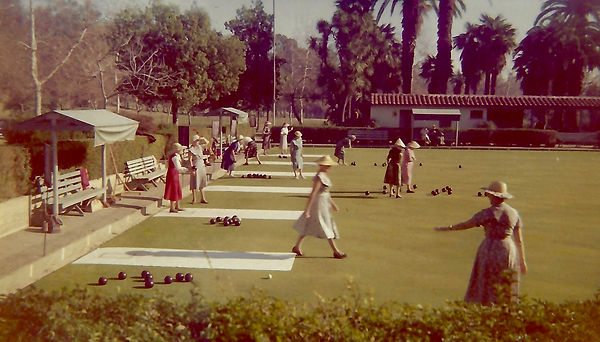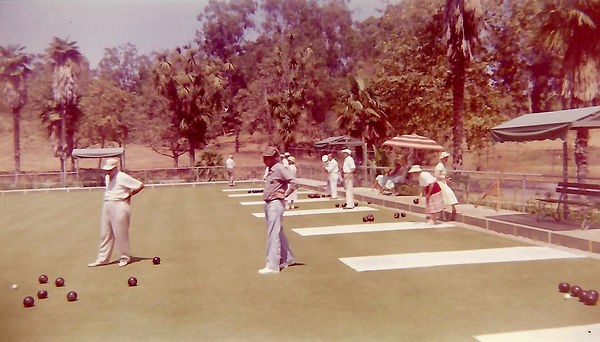Club History
Origin & Early Years
The Holmby Park Lawn Bowling Club (HPLBC) has been a prominent fixture in Los Angeles since its founding in 1927, making it the city’s oldest continuously operating lawn bowling club. Its home, Holmby Park, sits in the prestigious Holmby Hills neighborhood, on land deeded to the city by the Janss family-renowned real estate developers-in the early 1920s. The park was designed as a recreational haven, and the club’s first green was established soon after, quickly attracting about 80 founding members and becoming a social hub for lawn bowling enthusiasts.

Rise of the Club & Community
By the mid-20th century, HPLBC had established itself as a recreational and social landmark, frequented by celebrities like Walt Disney, Frank Sinatra, and Ronald Reagan. The club became known for its selectivity, requiring prospective members to pass written and practical tests on the sport’s rules and etiquette. Despite these standards, membership steadily grew, and the club fostered a vibrant, close-knit community.
A pivotal moment came in 1955, when philanthropist Marcellus L. Joslyn funded major clubhouse improvements, including a kitchen and a ladies’ locker room. In 1958, Joslyn’s generosity enabled the conversion of a former duck pond into a second green, allowing the club to host larger tournaments and inter-club competitions. These expansions were supported by private donors and the Marcellus L. Joslyn Lawn Bowling Foundation, which has continued to fund improvements such as floodlights for twilight play and enhanced park security.

Growth and Philanthropy
The club flourished during the 1950s, attracting an elite group of retired professionals, military officers, and Hollywood celebrities. Membership was highly selective, with applicants required to pass written exams on rules and etiquette as well as practical bowling tests. Despite these rigorous standards, membership grew steadily.
A pivotal moment in HPLBC’s history came in 1955 when philanthropist Marcellus L. Joslyn generously funded significant upgrades to the club's facilities. Joslyn financed an extension to the clubhouse that added a kitchen and a ladies' locker room. In 1958, he further supported the construction of a second green by converting a former duck pond into additional playing space. This expansion allowed for larger tournaments and inter-club competitions, fostering camaraderie among California’s lawn bowling community.
HPLBC continues to fund improvements such as floodlights for twilight play and enhanced park security.

Traditions and Community
HPLBC has always been more than just a place to play lawn bowls—it has been a vibrant community steeped in tradition. In 1940, the club began publishing its first newsletter, Holmby Happenings, which chronicled events and news for members. Over its 80-year run, the newsletter became an integral part of club life, with hundreds of issues preserved as part of HPLBC’s legacy.
Today, the club continues to honor its heritage while embracing inclusivity and modernity. With over 150 members from 19 countries, HPLBC thrives as a diverse and welcoming institution. Free lessons are offered to newcomers eager to learn the sport, while regular matches on Tuesdays, Thursdays, and Saturdays provide opportunities for players of all skill levels to engage with this elegant game.

A Legacy That Endures
HPLBC’s two meticulously maintained greens honor its history: one named after Dorothy Cella (established in 1971) and the other after Marcellus L. Joslyn. These greens have hosted countless matches over the decades, from casual games to competitive tournaments that celebrate both seasoned players and enthusiastic beginners.
Special events such as annual championships and holiday-themed competitions keep the spirit of lawn bowling alive while fostering camaraderie among members. The club’s commitment to community ensures it remains a cherished institution within Los Angeles
Looking Ahead
As HPLBC approaches its centennial anniversary, the club continues to offer free lessons, host tournaments, and provide a serene setting for recreation and community. Its legacy is reflected in its diverse membership, commitment to service, and the lasting friendships formed on its greens.
.jpg)
